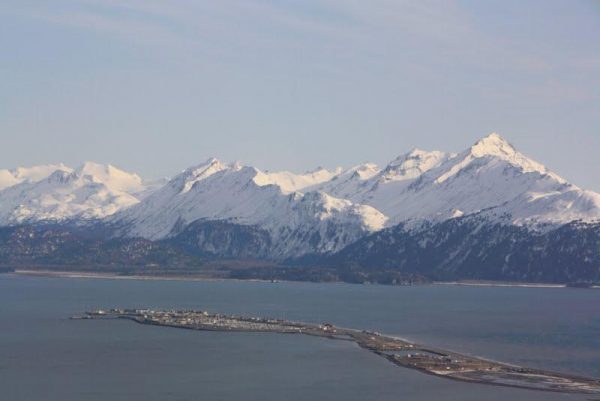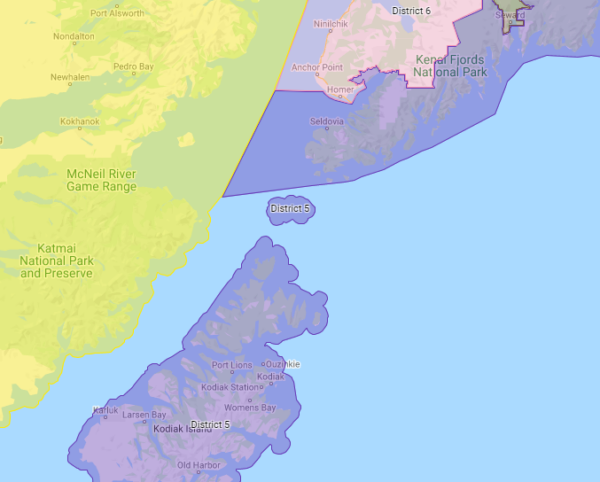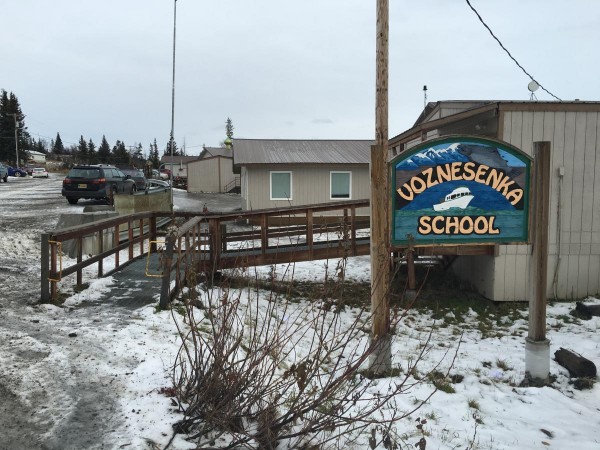
A series of communities stretch northeast from Homer off of East End Road, including Fritz Creek and Fox River. To get to those communities from anywhere else requires driving through Homer.
But under the state’s redistricting process, one proposal would have residents of those communities near Homer in the same legislative district as Kodiak, which is 140 miles away by water.
The proposal is drawing concerns from some Alaskans and it reflects a challenge for the state’s Redistricting Board as it draws district lines.
Homer area resident Laurie Benson said the proposal makes no sense.
“These areas are economically and socially tied to Homer, go to school here, work here, use our harbor, use our airport,” she said. “They’re part of the Homer community and should have the same legislative representative.”

Benson was among those the Redistricting Board heard from last week when it held a nearly six-hour public hearing. It was open to Alaskans calling in from across the state, but most of the callers were from the communities near Homer.
Benson’s point about the area being socially and economically integrated is important in redistricting because the state constitution says that’s a key factor for drawing district lines.
Lidia Martushev is from Voznesenka, a village near Fox River settled by Old Believers, an offshoot of the Russian Orthodox Church. She said her community is inseparable from Homer.
“We are a part of the Homer community,” she said. “We do all of our shopping there. My daughter is going to preschool in Voz(nesenka) School, and she is part of the Kenai Peninsula School District. My husband fishes in Cook Inlet.”

Residents of rural Interior Alaska, hundreds of miles away, know about the downside of being split off from similar, neighboring communities. Currently, western Interior villages are in three different House districts. And they’re all separate from a district that includes most of the rural Interior population.
Christopher Simon said this has caused problems. He’s a Fairbanks resident, originally from Huslia on the Koyukuk River.
“The Koyukuk River villages have been fairly split up for numerous years. And as a result, we are marginalized in the political process,” he said. “We have some of the villages that are with the northern district, some of the villages that are with the northwest district. And we are an afterthought to many of the issues. And we would like our own representative from our region to represent our interests and the things that we value.”
[Sign up for Alaska Public Media’s daily newsletter to get our top stories delivered to your inbox.]
But it’s a challenge for the board to keep one area together without affecting others. The reason why the board is considering splitting the communities near Homer has to do with drawing Kodiak’s district boundaries.
Kodiak is more than 5,000 people short of the ideal population it would need to have its own district. The target is 18,335 — that’s the state’s population of 733,391 divided by the 40 House districts.
Peter Torkelson, the Redistricting Board’s executive director, said a community’s sense of identity doesn’t always align with district boundaries.
“While Kodiak is certainly a borough, a city — it’s a unique place, it’s a beautiful place — it doesn’t have enough folks to have their own dedicated state representative,” he said.
For the past decade, Kodiak has shared a district with Cordova and other Prince William Sound communities, as well as parts of the Kenai Peninsula Borough that are off the road system.
But due to population changes, even with these communities, it’s still roughly 1,200 people short of the population goal. And it’s not clear where those people would come from. The Homer area is one idea.
But the alternatives have their own problems. And walking through them shows how complicated redistricting is.
First off, Kodiak, like much of Alaska, doesn’t have a lot of nextdoor neighbors. Torkelson said this puts Alaska’s Redistricting Board in a somewhat unique position compared to its counterparts in the Lower 48.
“Alaska courts have recognized that redistricting in Alaska is a ‘herculean task,’” he said. “And part of that, the courts have noted, is just Alaska’s immense and rugged geography.”
Drawing from anywhere north or west of Kodiak would lower the population of the district that includes the Aleutians and Bristol Bay. And that district is also short of people. If it or any of the other western districts were to add population, they would again split the rural Interior in a kind of chain reaction.
Torkelson said these kinds of interlocked changes can’t be avoided.
“We often hear things like, ‘If you could just make this one change.’ ‘If you could just change this one spot, then my concern might be addressed.’ And the board’s very sympathetic to that, but the reality of redistricting is that there is no such thing as ‘one change,’” he said. “Every district is connected. If you push one place, someplace else must get bigger. If you pull in, another has to go out. I heard one testifier describe as like squeezing a balloon.”
The board could add Valdez to the Kodiak district — but only if the district didn’t also include Cordova, because that would be too many people. And where would that leave Cordova? It’s too big to be added to a Southeast Alaska district. And it’s fairly different from the Copper River Valley communities on the road system to its north.
Another idea for the Kodiak-based district is to add Seward and its neighboring communities. But through another chain reaction, that could require splitting off part of south Anchorage — including Girdwood — to be added to another, very different district based in the northern Kenai Peninsula.
Those are the complications arising from just one district. And the board has to draw the lines for 39 others by the Nov. 10 deadline.
Alaskans will have another chance to call in to give testimony to the Redistricting Board on Oct. 30
The board also is holding in-person hearings around the state and is asking that written testimony be submitted through its website.
Andrew Kitchenman is the state government and politics reporter for Alaska Public Media and KTOO in Juneau. Reach him at akitchenman@alaskapublic.org.




